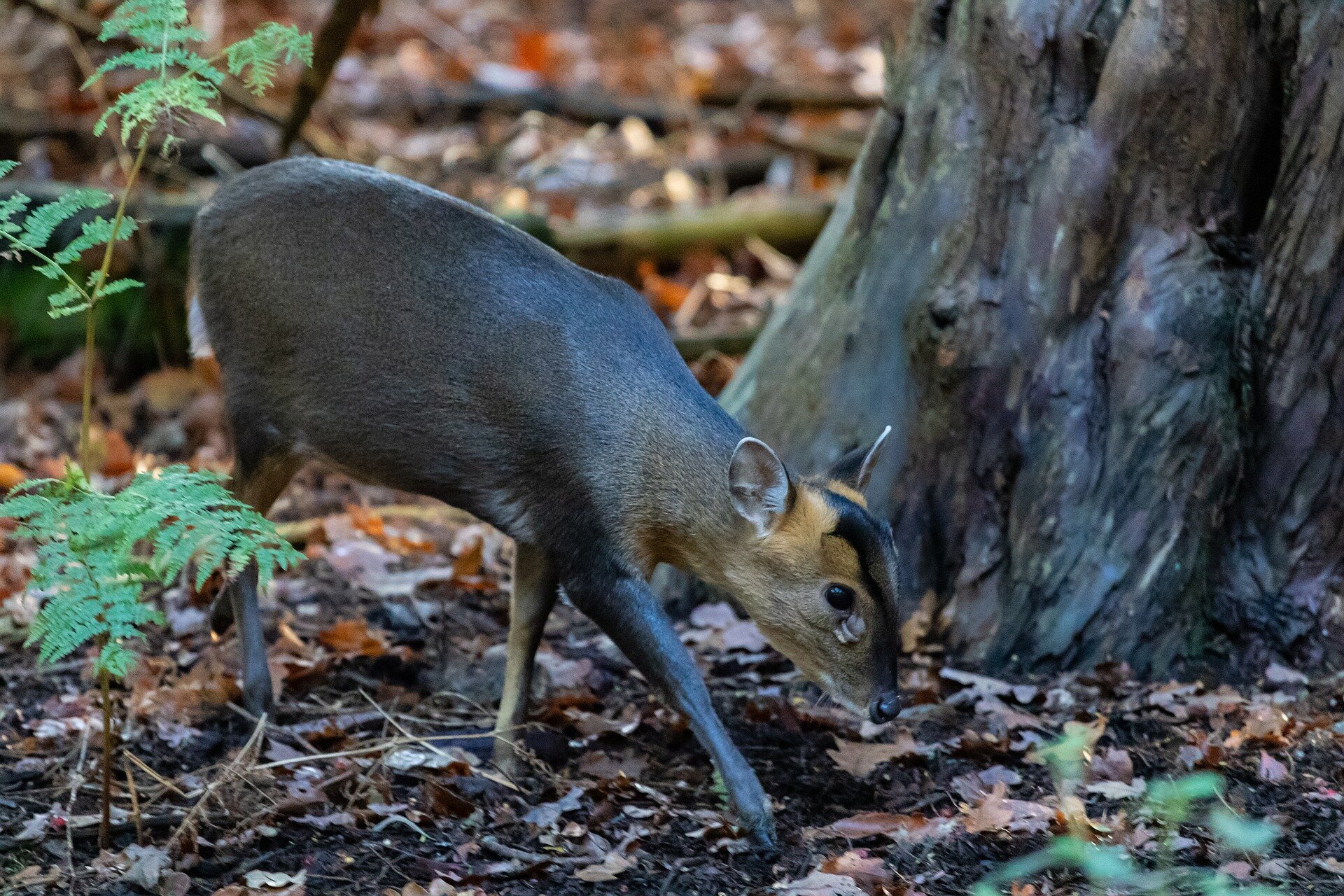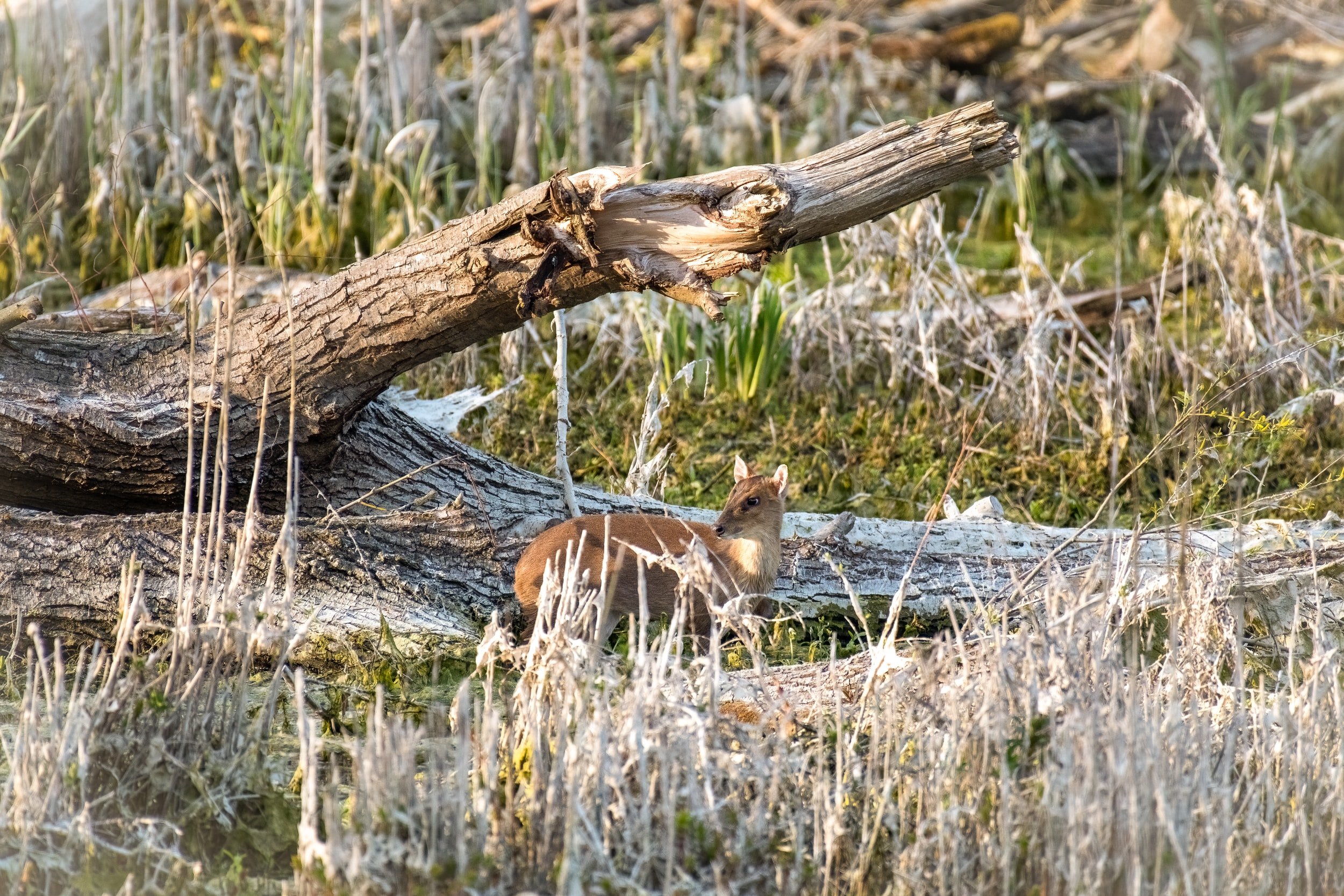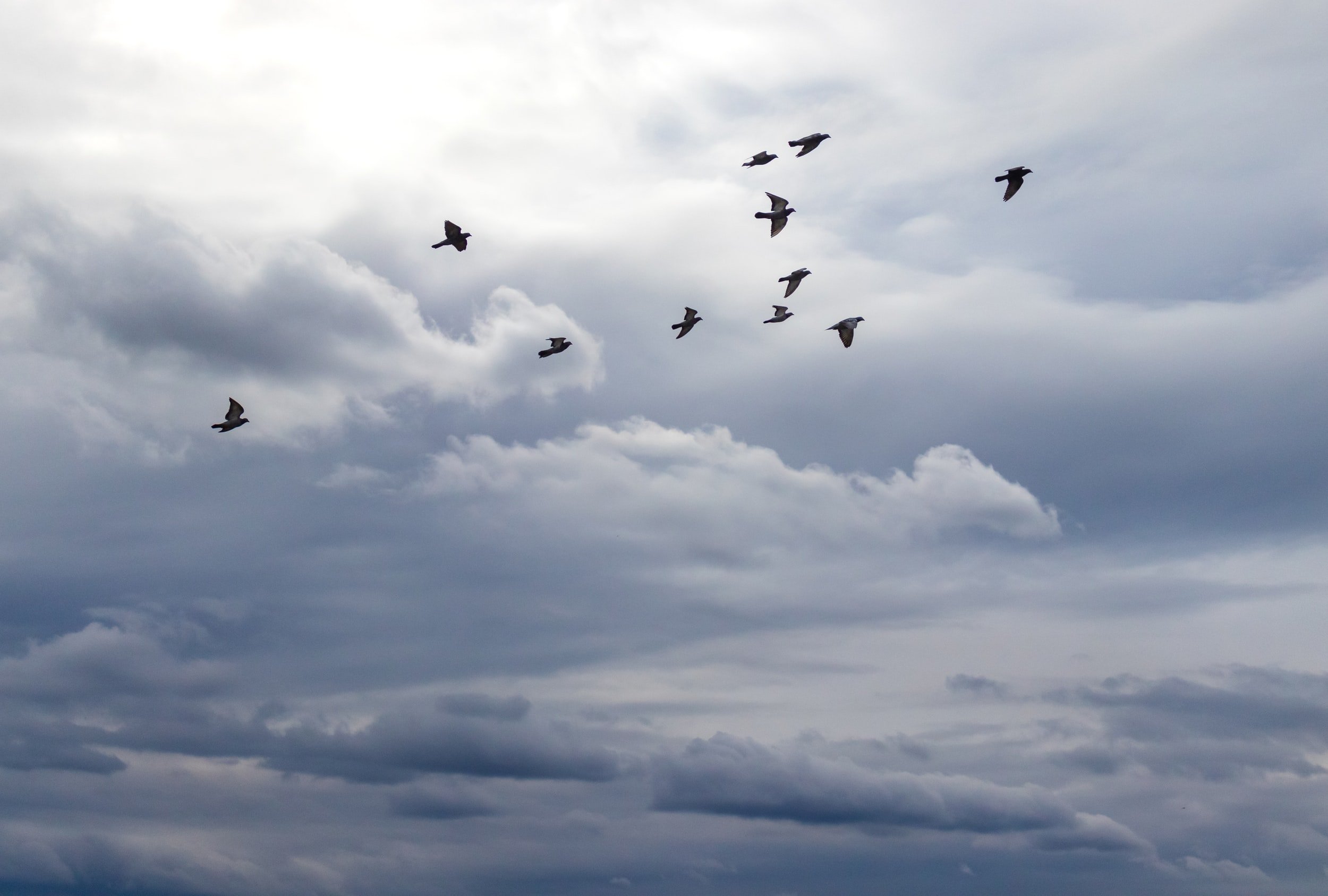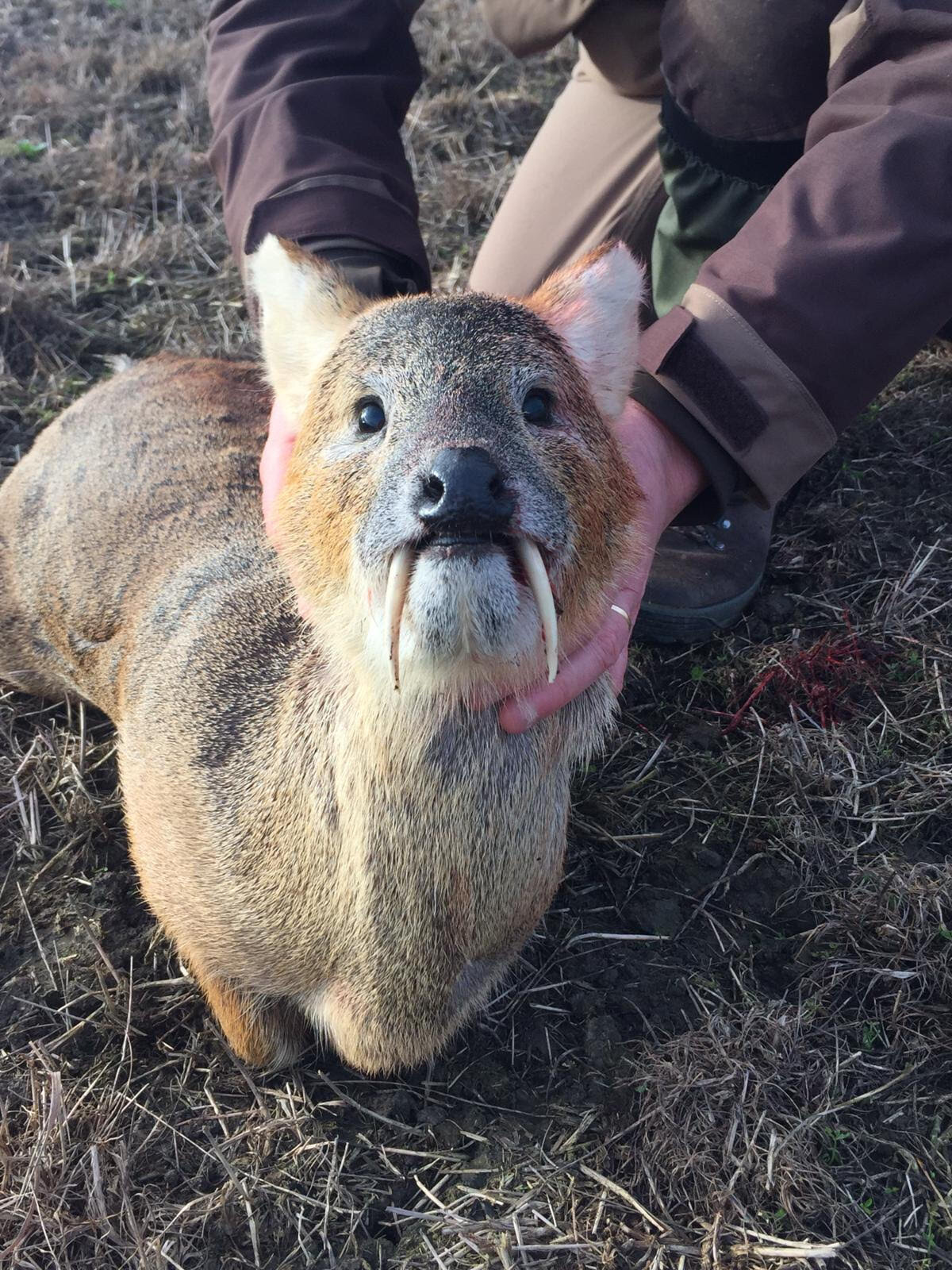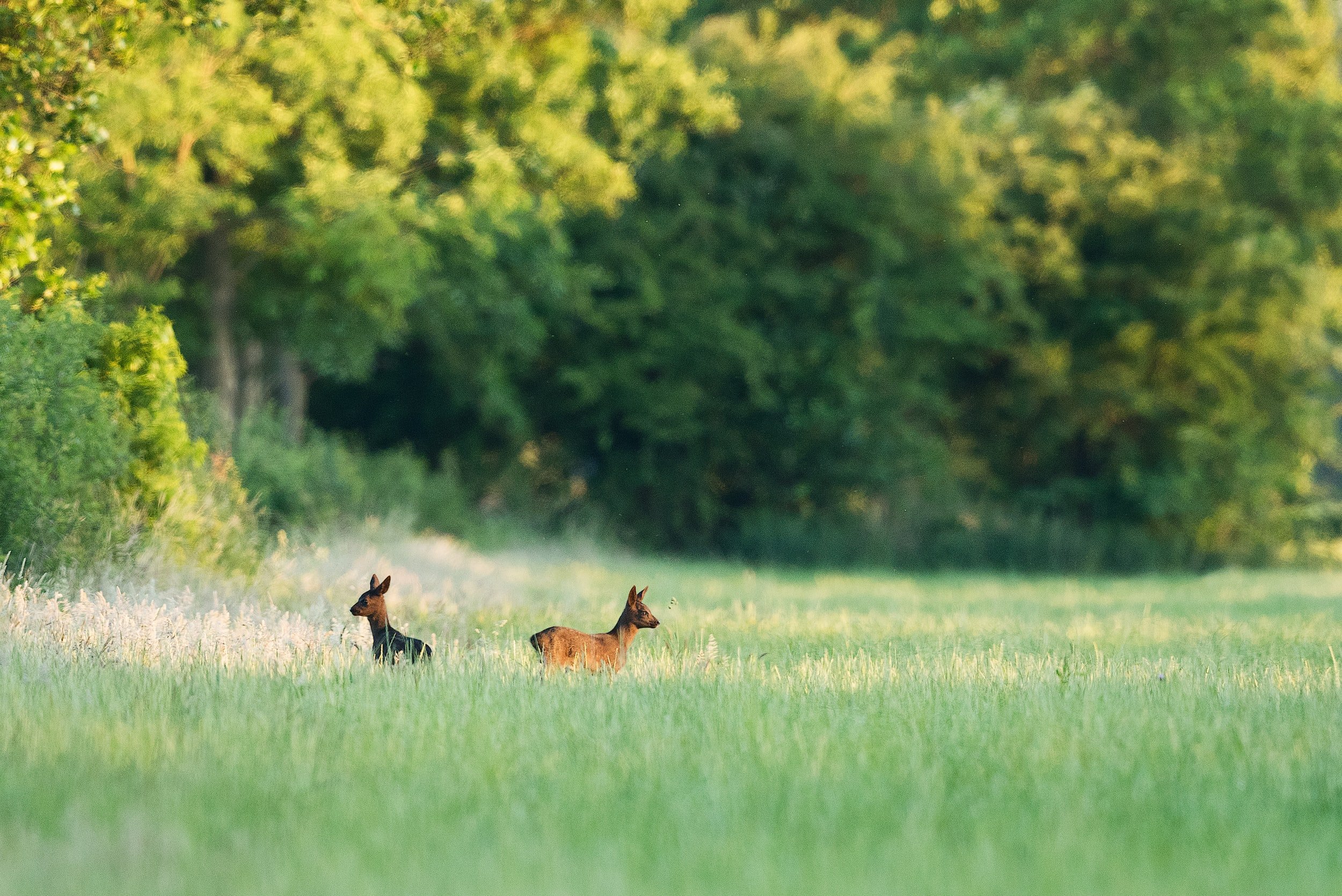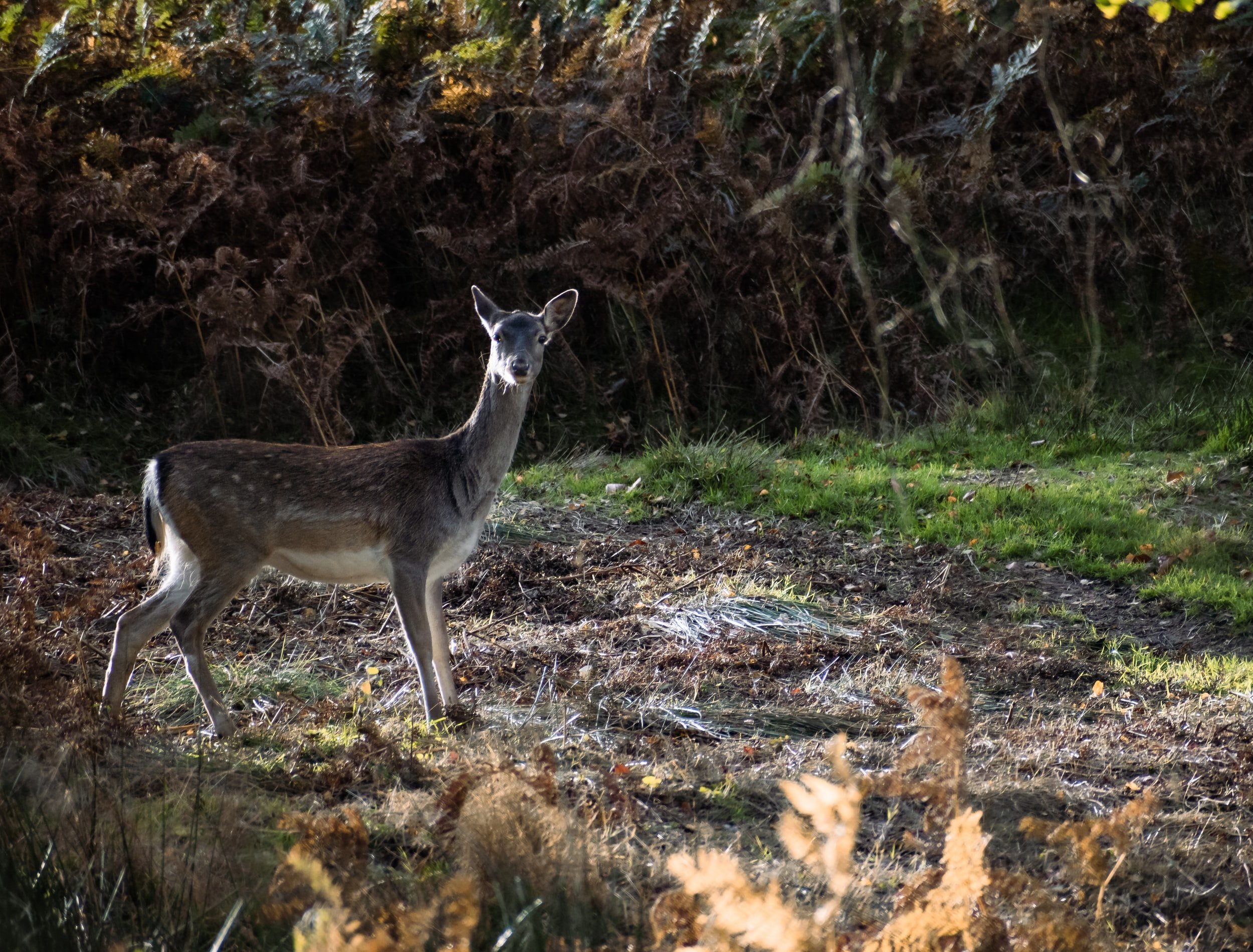
muntjac
unique in europe
The muntjac live wild in the UK and in China only. They were bought over to England in the 1890's by the (at the time) duke of Bedford into his parks of collected exotic species. There were probably some purposeful releases as well as accidental ones during the bombardements of the second world war which are said to have damaged park fencing of stately homes.
Muntjac are discrete and timid but also inquisitive.
An exotiC Species
Originally it was a similar species of muntjak (with a k) that was imported from India, who were slightly bigger and more aggressive. It was for that reason that they were swiftly replaced by the Chinese/ Taiwanese muntjac that we know and love today. “muntjac reevus”
Muntjac are special in that they are not only minature but the bucks grow sharp canineteeth as well as antlers. Their antlers are usually 5 - 8 cm average but the very mature bucks are often bigger.
An invasive species
Muntjac have no specific yearly rutting cycle for breeding, they breed all year round and a young doe is sexually mature at 7 months. Because of their rapid breeding and discretion, they have managed to populate most of England and have been rumored to have been found in the Scottish borders. However they are often overestimated in their breeding rate which in reality is not dissimilar to that or our native Roe, only muntjac don’t do it all in the same time of the year.
They are secretive and prefer to remain in or close to covered woodlands and scrub, but can be seen in the open.
Always on the go
It’s due to their unique qualities that they have successfully and quickly gone so far, but it is for all the same reasons that are also classed as an invasive species (but not vermin as many wrongly state).
They are very interesting to stalk because they are so small and they are always moving, they do not sit down to ruminate in plain sight like nearly every other deer can do from time to time. They are either hidden or moving, and it’s not uncommon to have a surprise encounter at 10 to 20 metres!
As a general rule we tend to prefer to sit out in a hide or a highseat for muntjac but are by no means limited to them.



